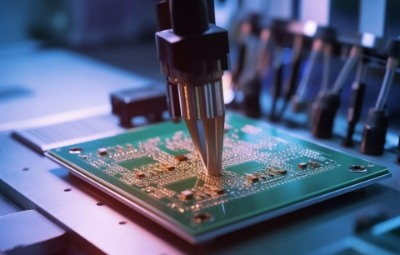In the previous article, we briefly introduced a crucial sub-sector within analog chips, namely power management chips. In this article, we will outline another important sub-sector of analog chips, the signal chain. Completing the introduction of signal chain chips also means completing the last piece of the integrated circuit chip puzzle. Let's begin.
1. What are Signal Chain Chips
Signal chain chips constitute the pathway for signals from input to output in a system, encompassing the entire process of signal collection, amplification, transmission, and processing. A typical signal chain includes the following two steps: 1) converting continuous signals such as sound, light, or electromagnetic waves into digital signals represented by 0 or 1; 2) converting digital signals back into analog signals through electronic systems.
Signal chain ICs are integrated circuits capable of receiving, transmitting, amplifying, and filtering analog signals. Signal chain ICs mainly include: ① Linear products: amplifiers, comparators, video filters, and analog switches; ② Converters: ADCs (Analog-to-Digital Converters), DACs (Digital-to-Analog Converters), and other converters; and ③ Interface products: primarily transceivers.

2. Classification of Signal Chain Chips
1. Amplifiers: Amplifiers generally refer to amplification circuits composed of interconnected operational amplifiers, which can amplify the voltage or power of an input signal. The main types of amplifiers include
2. Operational Amplifiers: Composed of transistors, capable of performing mathematical operations. Xinbole XBLW's operational amplifier chips are developed according to market demand, offering multiple high-performance, stable quality chips. These chips can be custom-packaged according to customer needs, such as small-size packages and custom pin configurations, making Xinbole XBLW packaging customization convenient for product design and development.
① General-purpose operational amplifier chips, features: wide power supply range, internal frequency compensation, high DC voltage gain, low input offset voltage and current, low quiescent power consumption, suitable for signal amplification circuits, delay circuits, and other conventional operational amplifier circuits.
Representative chip: XBLW LM358 package
LM358 typical application circuit
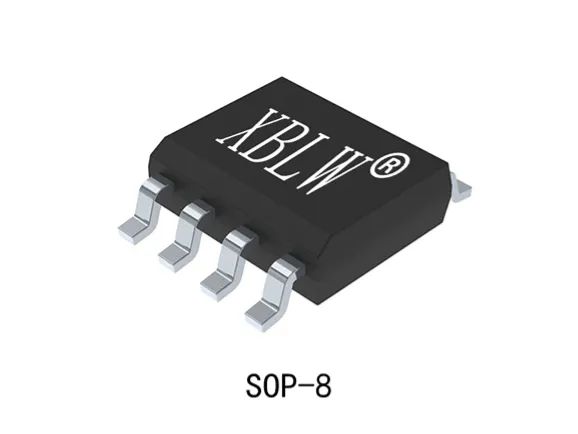
② This circuit is a battery charger automatic shut-off circuit. When the battery voltage does not reach the termination voltage, the detection circuit continuously outputs a "high-level" signal to control the transistor, making it saturate and conduct (equivalent to K closed). When the detection circuit detects that the battery voltage reaches the termination voltage, the detection circuit continuously outputs a "low-level" signal, keeping the transistor in a cut-off state (equivalent to K open).
③ Low-voltage rail-to-rail CMOS operational amplifiers, features: wide common-mode voltage range, rail-to-rail input and output, extremely low quiescent power consumption, input bias current and offset current in the picoampere (PA) range, designed with CMOS technology. These products are widely used in portable electronic products.
Representative chip: XBLW LMV321 package diagram

LMV321 typical application circuit
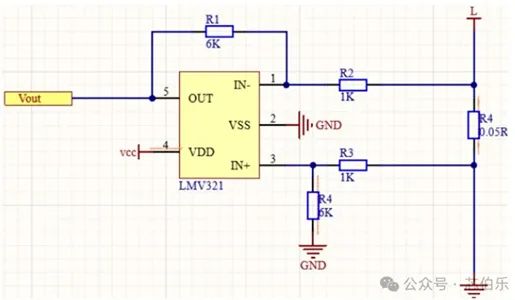
The above figure shows a current sampling resistor design circuit, using differential amplification. The current calculation formula for the LMV321 amplifier: I=R2*Vout/(R2+R4).

③ Low-noise operational amplifier chips, typically used to amplify weak signals in high-frequency systems (such as RF amplifiers), features: low noise, high gain, wide bandwidth, used in instrumentation, sensor signal amplification, high-speed data acquisition, communication circuits, etc. Representative chip: XBLW TL074
(2) Audio Power Amplifiers: Amplify weak electrical signals from the signal source to drive speakers. Xinbole XBLW's current audio power amplifier chips are of class AB. These chips feature high efficiency and good stability, used in car stereo tape recorders, mid-power audio equipment.
Representative chip: XBLW TDA2030A package diagram

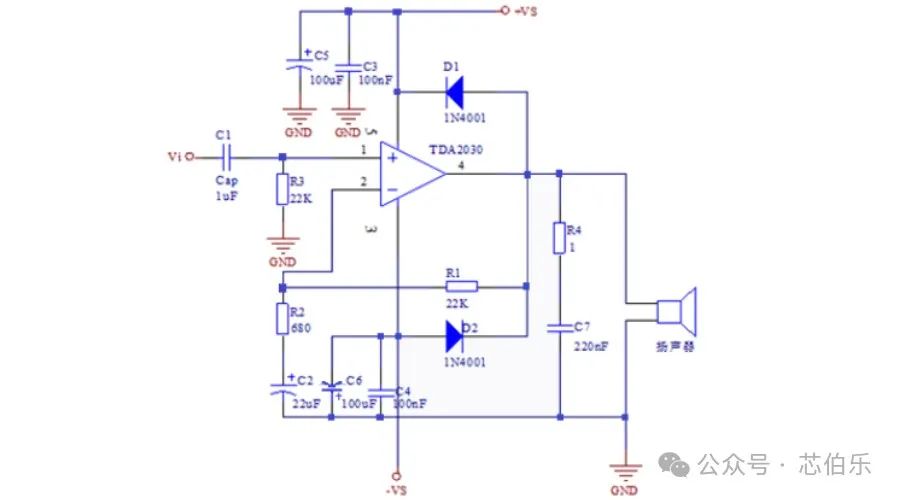
This circuit uses the TDA2030A operational amplifier to create a power amplifier. The power supply voltage is ±12V to ±22V. The maximum output power is 18W.
(3) Comparator Chips: Comparators compare the currents or voltages at their two input terminals and output different voltage results based on the comparison. Comparators are commonly used in analog-to-digital conversion circuits.
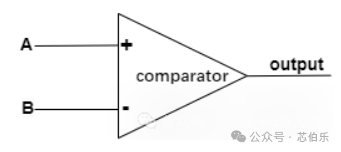
When Voltage A > Voltage B, output 1; when Voltage A < Voltage B, output 0.
Xinbole XBLW comparators include dual and quad comparators, meeting various circuit design needs. Two important performance indicators for comparators are: ① Low offset voltage, ② Propagation delay, the time between the moment the input signal exceeds the threshold and the moment the output state changes. Xinbole XBLW comparators excel in these parameters compared to competitors. They are used in power management, battery level detection, and automatic control systems, and frequently in temperature control and protection circuits.
Representative comparator chip: SOP-8 package

LM393 basic comparator circuit

3. Amplifier Chips Have the Following Characteristics
High Integration: Amplifier chips achieve high integration by incorporating multiple electronic components and circuits into a single chip. This allows them to perform complex amplification functions on a small chip while reducing circuit layout and connection complexity.
Miniaturization: Due to their high integration, amplifier chips are typically very compact and can be used in space-constrained electronic devices. This is beneficial for applications requiring amplification functions within limited space, such as mobile phones, audio equipment, and wireless communication devices.
High Performance: Amplifier chips have excellent performance indicators, such as high gain, low noise, high linearity, and wide bandwidth. They can stably amplify input signals without or with minimal distortion to meet the requirements of various applications.
Low Power Consumption: Amplifier chips are usually designed for low power consumption to reduce energy use and heat generation. This is crucial for portable electronic devices and battery-powered equipment, extending battery life and improving device efficiency.
Amplifier chips are widely used in various fields, including communication systems, audio equipment, radio devices, sensors, and measuring instruments. They provide signal amplification and enhancement functions to meet signal processing needs in different applications. Moreover, the high integration and miniaturization of amplifier chips make them indispensable components in modern electronic products.
Recommend News
-
Phone
400-9682 003


